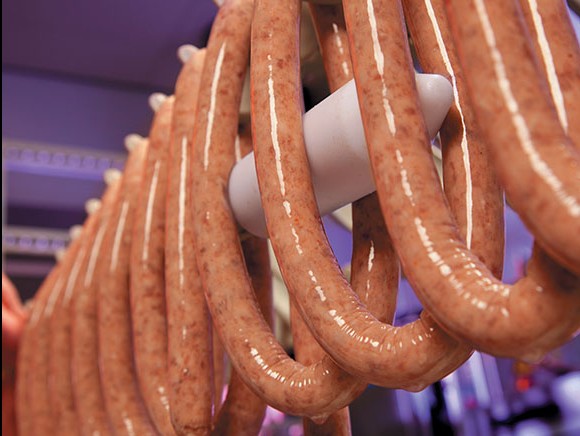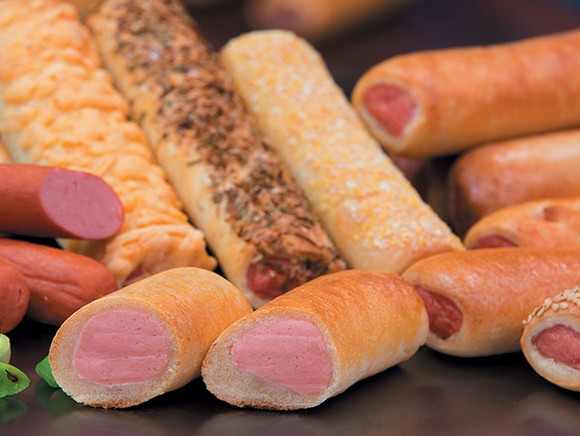
At family-run company Ruitenberg Ingredients in Twello conceptual ideas, ingredients and processes are combined. These three pillars form the basis for the successful development of high-quality products. The company even goes a step further: application technologists provide on-site support when the developed solutions go into production for the first time in the customer’s own factory.
Ruitenberg is focused on a number of sectors, including meat, bakery and convenience as well as confectionery. It prefers to invite its partners, whether customers or suppliers, to visit its facility in Twello to give shape to their product ideas. “We recently opened our fourth technology centre. These centres enable us to replicate and run industrial production processes at pilot level,” says Ward van der Kaaij, Managing Director at Ruitenberg. “Thanks to this fourth location, we can offer our customers even more flexibility based on state-of-the-art equipment. We aim to help our customers both in terms of ingredient formulations and advice to ensure that the end product can be manufactured without any problems. We’re not satisfied until the customer is.”
One of Ruitenberg’s innovations is known in the sausage industry under the brand name RudinVegaCasing. R&D Manager Marian Verbruggen explains: “This is a ready-to-use paste based on seaweed extract (alginate). It forms an edible casing around the sausage filling. It is used in conjunction with co-extrusion as the production process for the sausage. This solution was developed in early 2000 along with the associated co-extrusion technology. Since then various sausage manufacturers have switched to this system due to the functional and financial benefits.” Over the years since then, the product has been continually further developed into a product line in which various versions have been made suitable for all types of sausages. One of the new VegaCasings that will be promoted at IFFA in Frankfurt in May is unique thanks to its optimal adhesion to meat fillings for cooked products. Another variation has been specially developed for applications which require a strong casing. This casing enables heavier sausages to remain vertically suspended during further processing.
For Ruitenberg, the IFFA trade show (7-12 May) will also be an opportunity to present its latest innovations in the area of liquid smoke. Gerwin Mulderij, Account Manager Benelux and Product Manager Smoke, says that many companies still smoke their meat and fish products in the traditional manner: over wood. “However, that traditional way of smoking is at complete odds with our environmental awareness and the increasing focus on health,” comments Gerwin. “Liquid smoke offers all kinds of advantages, but the transition can entail substantial investments such as the purchase of new smoking chambers. We’ve devised ways of helping customers to make the switch by developing liquid smoke products that we can test on the customer’s premises using a mobile atomising unit. This can be done without damaging the traditional smoking chamber. After experiencing this for themselves, customers can decide whether they want to invest in a new smoking chamber or in a much more affordable mobile unit to be used in combination with their existing smoking chamber.”
The advantages of liquid smoke at a glance:
• Consistent colour and flavour
• Process time savings
• More production capacity
• Lower energy costs
• Less weight loss (3-5%)
• Longer shelf life
• Low investment costs
• Cleaner process and also healthier for employees
• Environmentally friendly
“We see even more opportunities to use the co-extrusion lines for sausage production,” continues Marian Verbruggen. “RudinBreadCasing, for example, has been developed as a variation on the VegaCasing. Using the same co-extrusion technology, a special yeast-free bread dough encases the meat or other specially developed filling. This enables meat processing companies to continuously produce sausage rolls, for example. When developing this application, we have of course also taken care to leave out allergens that are undesirable in a meat context, and we’ve also ensured that the dough is easy to prepare on a cutter that can be found in every meat production facility. For these companies, this can represent an opportunity to expand their product portfolio but it can also be a way to fill any overcapacity that may have arisen.”

‘Unique thanks to its optimal adhesion to meat fillings for cooked products’
The threat of overcapacity is the result of new nutritional advice and sustainability trends which are causing consumers to eat fewer meat products in favour of meat substitutes. “We can also support our customers in this respect, such as by putting our knowledge and experience to good use to formulate great-tasting meat alternatives – either vegetarian or vegan ones. These can be made using existing sustainable proteins obtained from dairy or plants, for example. We have also developed our own technology for lending more texture, bite and juiciness to all kinds of proteins. Innovation is a continuous process. This technology is currently still being developed but it is expected to be ready for market launch at the beginning of 2017.”
Source: © Ruitenberg